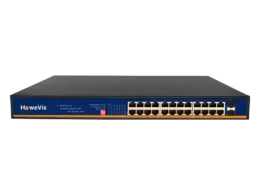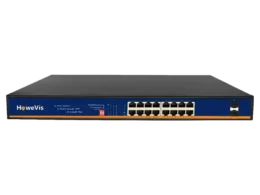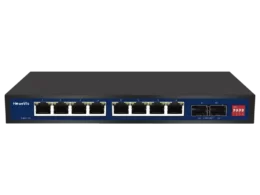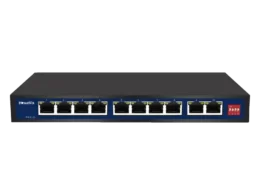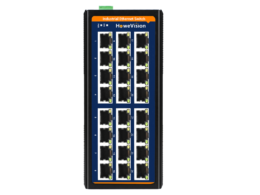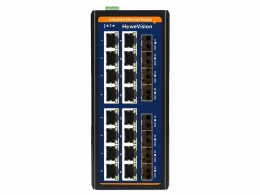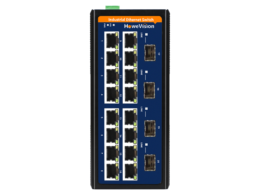PoE switches are very efficient tools to run devices over Ethernet. They need only one power source to provide data and power to multiple internet-enabled devices.
Besides, these switches are easy to operate. But when there is an issue, it might become cumbersome to conclude what’s wrong with your network.
Once you have an issue, you might think it’s the switch that is acting mad. It would be very premature to conclude anything without having a proper test. You need an organized approach to rectify errors in your network.
Let’s discuss a very pragmatic approach to testing a PoE switch.
How to Determine if the PoE Switch Is Faulty?
Suppose you are using only a couple of devices on your PoE switches like a camera or a network router. You can start by checking ports. The odds are very high that a particular port is not functioning. A reason could be excess dust collected in that port or lack of constant power.
If the problem persists, the device does not run, despite switching ports, you need another PoE-enabled device to verify that your switch is faulty. You certainly don’t need to go and buy a PoE-enabled device to run that test. You can use any functioning VOIP phone in your home or office.
If the phone starts working, then certainly the problem is not with your PoE switch. Your switch is working perfectly fine. Even so, make sure all the ports of your switch are well functioning. For this, you can plug in the Ethernet cable of your phone in all the ports and test them respectively.
When the switch is working fine, you can eliminate one possibility of faulty PoE switch ports. Moving ahead, let’s test other variables involved in the proper functioning of PoE switches.
Testing Other Elements Linked With a PoE Switch
Once you eliminate the possibility of your PoE switch being faulty, you are almost halfway through the testing process. You can now quickly move on to other vital variables.
Let’s have a look at those variables one by one and run the diagnosis process.
1. Cable
If your PoE switch functions well, then the Ethernet cable you are using to run your PoE-enabled device may be defective. Do not waste time twisting and stretching your cord. It will not yield much value to you. Just try to use a cable tester or replace the cable.
Suppose your device responds well after changing the cable. Then, you can eliminate two possibilities: The PoE switch and the line.
2. Device
After passing the PoE switch and cable tests, you can narrow down your options even further. The next thing that you should test is your device itself.
The easiest way to do it is by swapping the device with a similar kind of device. If the replacement works, your hunt ends here. It’s your device that is troubling you.
3. Network
Let’s say you went through all the checks mentioned above, and your device still doesn’t work. You are bound to doubt your network. Even if the internet connectivity is good, you should check with your internet service provider. Do they face any problems regarding DNS? Are there any issues that usually pop up with increasing power?
Based on their response, you can devise your strategy. Sometimes, ISPs don’t conduct a thorough review despite a request from you. Sometimes, your ISP claims that everything is okay from their end, but the problem persists. That’s the time when you need to look beyond conventional testing methods. And go with advanced techniques of using tools like PoE splitter and Network tester.
Finding Issues Using a Network Tester
If you reach this stage, you are well placed. You successfully managed to eliminate significant issues. When you use a tool like a network tester, you will be checking through more suitable issues.
If you are new to network testers, don’t conclude anything with the name of this tool. The tool ‘network tester’ does not only test your network. A network tester is an advanced tool that identifies issues with everything from your cable, PoE devices, and PoE switches to the power source.
The PoE testers perform the following tests, if you find any anomalies, you can report them to the internet service provider.
- Continuity test of the network cable
- Power test for both AC and DC
- PoE switch test
- Power test PoE devices
- Overloading test
There are various network testers available in the market. You can even get a pocket-sized network tester.
After all the advanced tests, let’s say you find out that only your PoE switch was faulty. Then, you have two options at your disposal, either replace your PoE switch with a new one or go for repair.
Replacement vs. Repair
There is a saying in the computer hardware industry, “Computer hardware gets old after a year, no matter how good they are.”
It’s partly true and partly false. As far as PoE switches are concerned, they will last for about five years if it’s from a good brand.
Reliable brands give you a warranty of almost two years. So, if your switch is in the warranty period, you should approach your brand retailer and go for repair.
If your product is older than three years, and you are operating hybrid or managed PoE switches, it will help if you don’t take a risk and go with a replacement. The reasoning behind that is simple. Though the PoE switches have a life of about five years, make sure you test them frequently.
Final Thoughts!
Suppose the stakes are not very high. You are using PoE switches on a short campus or in your home. It’ll be easy to go with the above “step-by-step” methods of troubleshooting. Getting a network tester/splitter should always be your last resort.
Likewise, if you are catering to a large organization and time is your biggest constraint, going with a tester is a way to choose. Finally, to minimize issues, getting the switches from a quality PoE switch manufacturer like HomeVision is the easiest thing that you can do from your end.

